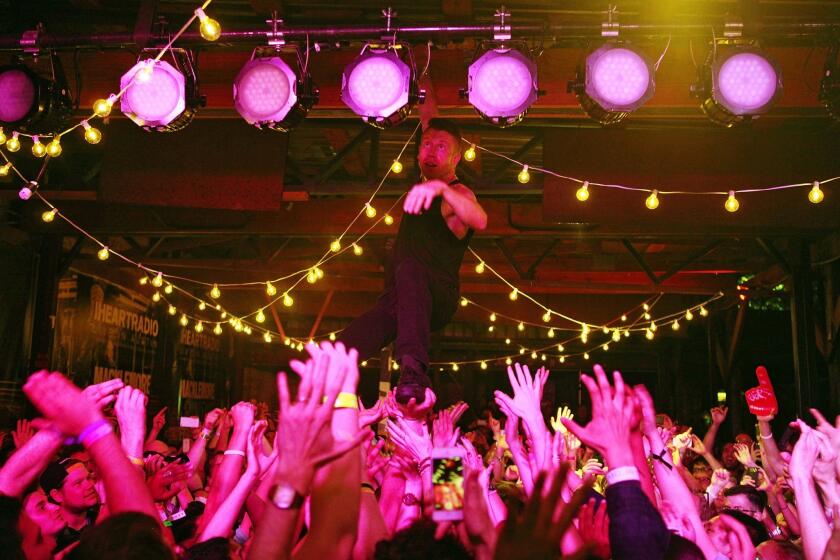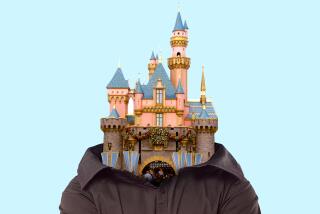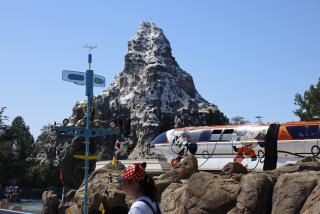Coronavirus fallout: Why closing Disneyland is such a blow to American optimism
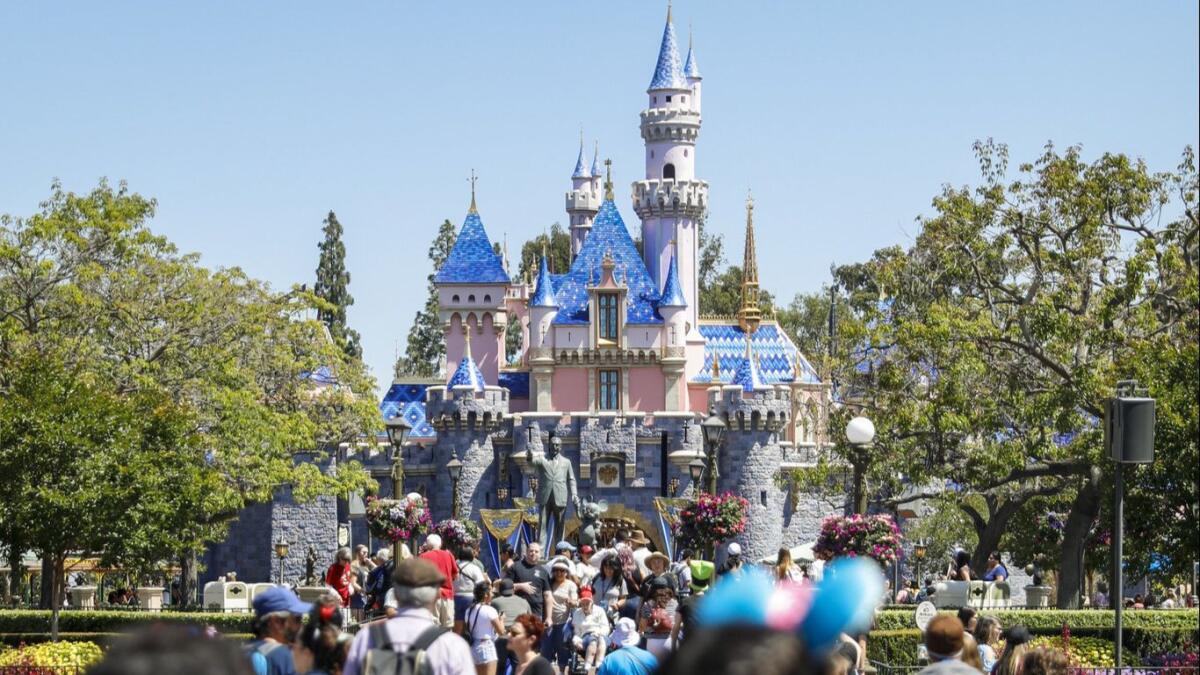
As one American institution after another fell — the NBA season halted, the start of the Major League Baseball season delayed, Broadway going dark — the closure of Anaheim’s Disneyland Resort Friday night became not just inevitable but imperative.
To remain open any longer than absolutely necessary during a public health crisis could start to appear irresponsible to the park’s front-line staff, especially in the wake of an executive order by California Gov. Gavin Newsom aimed in part at curtailing large-scale events across the state.
And yet when Disney’s announcement came, it still hit hard. A full unplanned, non-weather-related closure of Disneyland is such an abnormality that it’s happened just three times in the park’s 65-year history. In each instance its hand was forced by events beyond control of the company so adept in the art of optimistic illusion.
The walls of Disneyland’s fairy tale castle — buoyantly pink and cheerfully blue still at this very moment — have stood through multiple wars, civil rights movements, economic downturns and nearly every societal trend, change or tragedy.
For whatever was happening in America, and regardless of the corporate directives of the Walt Disney Co., the pirates, the ghosts and the island birds still sang. It’s taken for granted that Disneyland stays open, like a high-priced roadside attraction that stands as a symbol of the stability and the seemingly ever-lasting appeal of American pop art. Throughout its six decades, Disneyland has taken the pulse of American culture, be it the romance of Main Street, U.S.A., and New Orleans Square, or the Western action of Frontierland and the intergalactic hopefulness of Space Mountain.
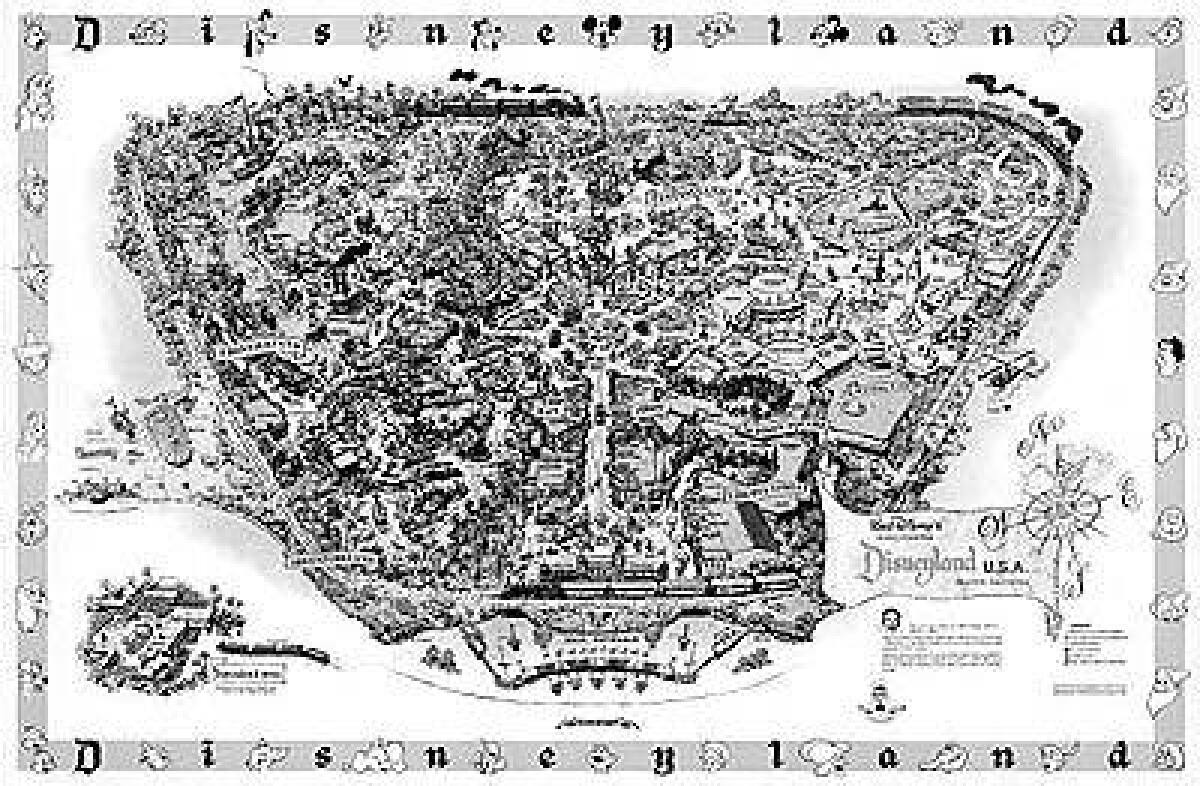
Disneyland has proven so remarkably durable that it has been replicated and re-imagined multiple times and in numerous spaces, spreading American ideals to not just Walt Disney World in Florida but to parks in Tokyo, Paris, Hong Kong and Shanghai.
And yet come Monday — following the closing of Disneyland Resort and earlier shutdowns in Asia — every single Disney theme park in the world is scheduled to be closed, and a global heartbeat that began in Anaheim will stop beating for the first time in our history. Vietnam, the AIDS crisis, the economic crash of 2008 and even the death of the park’s founder, Walt Disney, couldn’t stop Disneyland from humming.
But today the silence in Anaheim and beyond is sending a rather loud message: We are, at this moment, broken.
When Disneyland’s turnstiles have in the past been locked into place, they held steady only briefly, as if for a short momentary pause to catch our collective breath.
Coachella, SXSW, “Hamilton,” the next “Fast and Furious” movie and even Disneyland have been affected by the coronavirus. But wait — there’s more.
On November 23, 1963, a national day of mourning in honor of the late President John F. Kennedy, Disneyland observed a daylong moment of silence. And after the terrorist attacks of Tuesday, Sept. 11, 2001, the park nearly instantaneously rebounded. Disneyland was closed for a single day, reopening on Wednesday. As so much of the rest of country grieved or remained in shock, the mechanical children of It’s a Small World were called back into action.
A stubborn move or a defiant one? Stories at the time wondered about the economic toll of a one-day closure, written from the point of view that Disneyland simply didn’t have the business option to remain offline. And yet, especially for a large company so intertwined in the mix of art and commerce, it’s all too easy to overlook the communal import of Anaheim’s Magic Kingdom. Often spoken of as a place of reassurance, going to Disneyland for many is the ultimate act of self-care. It’s not an escape — we are never not aware that we are in a theme park — but it is a reset.
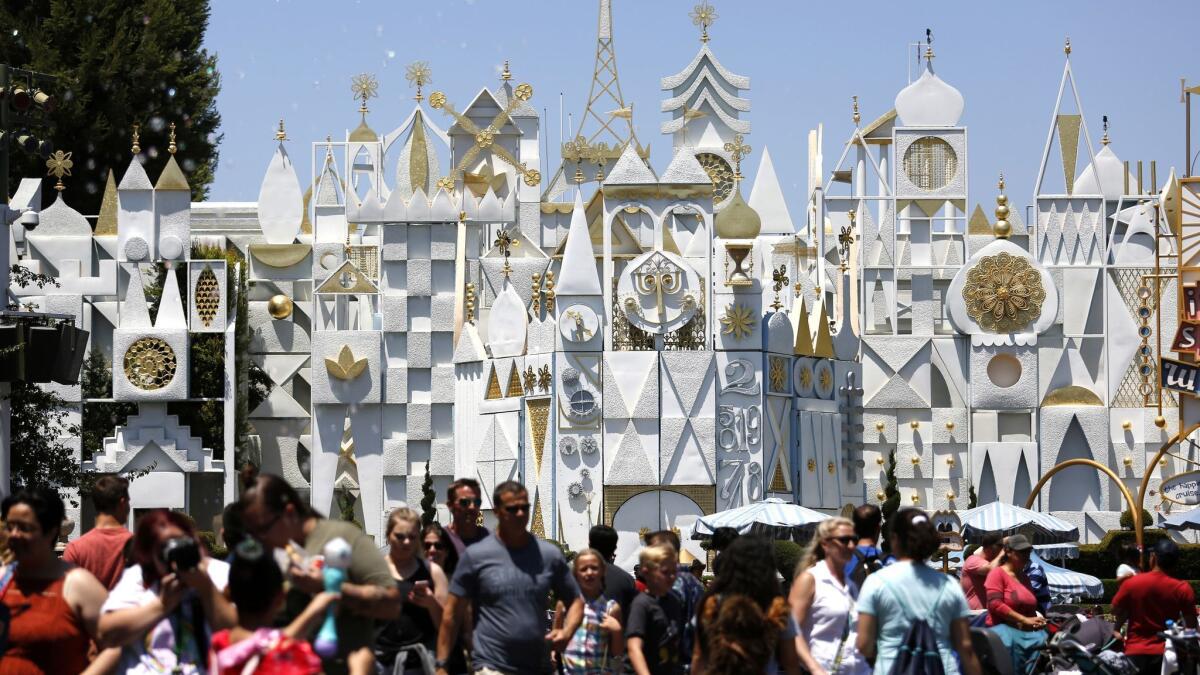
Nearly any other time Disneyland has shuttered has been due to severe and sudden weather, which itself is a rarity, largely due to the fact that so many of Disney’s attractions are indoors and not subject to the elements in the same way as a standard amusement park (or the hurricanes that can rain on Walt Disney World).
And yet Disneyland, of course, is slippery. “It can be treacherous walking around the park,” a Disney spokesman told The Times after the park was shuttered for a day in 1987 due to storms.
But by and large, Disneyland has been able to fight through whatever ails our country’s collective consciousness, even as it so often directly reflects it.
READ MORE: FULL CORONAVIRUS COVERAGE
While Disneyland can be seen as a fake world inspired by a real one that never actually existed, don’t mistake environmental storytelling for nostalgia. Main Street, USA, especially as it has aged, is less about some longing for better, more simple times. It’s small-town America as a movie set, and it serves to reorient us, to place us somewhere vaguely familiar while allowing us to drift back into our imaginations. Suddenly, a castle at the end of block isn’t disruptive; it’s extending a hand.
For those on whom this fantasy works — and if attendance estimates are accurate, it works for somewhere around 19 million people per year — Disneyland allows us to become emotionally free, to surrender ourselves into an exquisitely designed, thoughtfully crafted narrative. It’s a sensation not too dissimilar from the power of live theater, only now we are on the stage and comfortable to play at idealized versions of ourselves.
This isn’t to say Disneyland is so romanticized that it exists separate from our world. On the contrary, it complements it, and it sometimes has things to learn from it. Disneyland, for instance, was forced to aggressively distance itself from its history of a less-than-welcome approach to same-sex couples, staging a large fundraiser in 1987 for AIDS Project Los Angeles to, in the words of a park spokesman, “dismiss finally all the nonsense that’s happened in the past.”
Thus, Disneyland shifts with us, and, even when it’s behind the times — one today could still go hunting for some less-than-exemplary representations of other cultures in Adventureland — its fans tend to forgive Disneyland because it represents not just where this country has been but where it can go. In 2017, when Imagineers announced that Pirates of the Caribbean would no longer feature women sold into slavery, it avoided what could have soon become a mini-crisis during the #MeToo movement.
Ultimately, Disneyland may in fact be exactly where this country turns in dark times. It could be argued that it is, in fact, born of them, arriving in 1955 in a post-WWII America that was adjusting to more internalized, less-overtly-visible fears. The specter of nuclear annihilation was now forever a reality, and the Cold War heightened the sense of uncertainty.
“Is it any wonder Walt begins his story of Disneyland with a walk through the last stable time in American to restart the narrative?” rhetorically asks Chris Nichols in Taschen’s expansive 2018 book “Walt Disney’s Disneyland.”
No, and it shouldn’t be any wonder that Disney’s American theme parks are today, with the occasional exception, as consistently crowded as they have ever been, to the point that some have even wondered why so many so-called childless millennials are filling the parks.
But in a time of political and cultural divisiveness, in which even today’s fears surrounding the coronovirus are politicized, not to mention an era of financial uncertainty for so many, why wouldn’t we flock to a place where everything simply makes sense?
So as prudent as Disneyland’s closure may be, it also amplifies our anxieties and the unpredictability of life at the moment. Disneyland is closed at least through the end of the month, but as we have seen from other parts of the world attempting to manage the spread of disease, a re-opening date is far from firm.
Disneyland, of course, will survive. It is built to last, designed, in the words of its creator, to represent “the ideals, the dreams and the hard facts that created America.”
Yet unlike the times after the death of a president or an act of war, Disneyland won’t be bouncing back in 24 hours as a place of comfort. For the first time in its six-plus decades, the Disneyland berm, which is designed to limit visible and audible intrusions from the outside world, has proven powerless.
No wonder so many feel so indefinably confused.
More on Disneyland
Coverage on Disneyland from the Los Angeles Times.
More to Read
The biggest entertainment stories
Get our big stories about Hollywood, film, television, music, arts, culture and more right in your inbox as soon as they publish.
You may occasionally receive promotional content from the Los Angeles Times.
